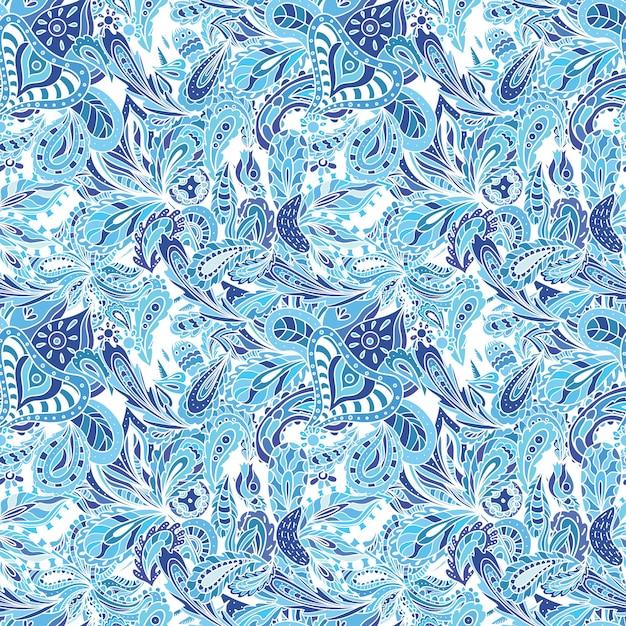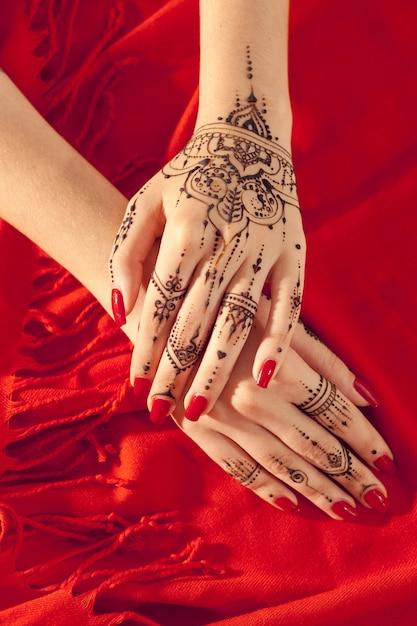Have you ever wondered if it’s possible to apply indigo to your hair without using henna? Well, you’re not alone! Many people are curious about whether indigo can be used on its own to achieve beautiful hair color. In this blog post, we’ll explore this question and provide you with all the information you need.
Indigo is a natural dye derived from the plant Indigofera tinctoria, and it has been used for centuries to dye fabrics and hair. Traditionally, indigo is often combined with henna to create different shades and colors. However, there’s a growing interest in using indigo on its own, especially for those who are looking to cover gray hair or darken their natural color.
If you’re wondering about the benefits of indigo powder and if it can be used as a standalone hair dye, we’ve got you covered! We’ll also address some common concerns such as the possibility of hair loss, whether indigo is permanent, and how to mix henna and indigo for gray hair coverage. So, let’s dive right in and explore the world of indigo hair dye!
Don’t touch that dial! If you’ve ever wondered about applying indigo without henna, you’re in luck. We have all the answers and expert tips for you. Let’s get started!
Can You Use Indigo Without Henna
So, you’ve heard about this mystical hair dye called indigo, and you’re wondering if you can use it without henna. Well, my friend, you’ve come to the right place to unravel this hair dye conundrum.
Overview of Indigo and Henna
Indigo and henna are like the dynamic duo of natural hair coloring. Henna, derived from the leaves of the Lawsonia inermis plant, has been used for centuries to create vibrant red and reddish-brown tones. Indigo, on the other hand, hails from the plant Indigofera tinctoria and imparts a gorgeous deep blue hue.
Mixing Indigo and Henna—The Winning Combo
Now, let’s dive into the fact-checking arena and address the burning question: Can you really use indigo without henna? Well, technically, you can, but it might not give you the result you’re longing for. You see, henna is a key player in the coloring process—it prepares your hair for indigo and helps grab onto the color.
The Real MVP: Henna’s Role
Henna acts as a primer for indigo. Applying indigo directly to your hair may result in a muted shade or even greenish tones, which is not quite the look most people desire. By using henna as a base, you ensure that the indigo clings to your tresses and imparts that stunning blue shade.
The Power of Prepping
To create the perfect indigo hue, you’ll need to prep your hair with henna before diving into the indigo bath. Think of it as laying the groundwork for a masterpiece. Start by applying henna to your hair and let it work its magic for a few hours—covering your head in plastic wrap, you’ll look like a true hair connoisseur!
When Can You Apply Indigo
After rocking the henna treatment, it’s time to play with indigo. Once the henna has settled in (two to three days later), apply the indigo paste to your hair. Leave it on for a couple of hours, and voila! You’ll have an envy-inducing blue shade that might just make you feel like a superhero.
It’s All About the Mix
For those tempted to skip the henna step and go straight to indigo, beware the potential pitfalls. Mixing indigo without henna might leave you with less desirable results. You might end up with hair that looks more Hulk than mermaid. We don’t want that, do we?
So, can you use indigo without henna? Technically, yes. But for the best results, it’s recommended to team up indigo with its trusty sidekick, henna. Remember, henna does the heavy lifting in prepping your hair for the indigo color, ensuring you achieve that breathtaking blue shade you dream of. So, embrace the henna-indigo combo and become the envy of all your friends with your stunning, vibrant locks!
Keywords: indigo without henna, natural hair coloring, indigofera tinctoria, vibrant red and reddish-brown tones, apply indigo without henna, henna as a base, create the perfect indigo hue, prep your hair with henna, apply the indigo paste, skip the henna step, mixing indigo without henna, henna-indigo combo.
FAQ: Can I Apply Indigo Without Henna
Can we apply only indigo on hair
Indigo can be used alone to dye hair, but it will only produce a blue or black color on lighter hair. If you have darker hair, indigo alone may not be noticeable. It is often recommended to use henna with indigo to achieve more vibrant results.
Can I oil my hair after indigo
After applying indigo, it is best to wait for at least 48 hours before oiling your hair. This allows the indigo dye to fully settle and bond with your hair strands. Oiling too soon may interfere with the dyeing process and reduce the effectiveness of the color.
Can I leave indigo in my hair overnight
While leaving indigo in your hair overnight may deepen the color, it is generally not recommended. Indigo has the potential to stain the scalp and skin, so it’s best to follow the recommended processing time mentioned on the product instructions.
How can I hide my gray hair without dying it
If you’re looking to hide your gray hair without traditional dye, you can try using indigo powder mixed with henna. The combination of these natural dyes can provide a blend of colors that effectively cover gray strands without harsh chemicals.
Does henna really cover gray hair
Yes, henna is known for its ability to cover gray hair. It deposits a reddish or orange color onto the strands, resulting in a rich and vibrant shade. However, if you want a darker color, indigo can be added to the henna mixture.
How long does indigo dye take to be released
Indigo dye needs time to develop and release its color. Generally, it takes about 2 to 4 hours for the dye to fully release and become darkest. However, the exact time may vary depending on factors such as the quality of indigo, hair type, and desired color intensity.
When can I apply indigo after henna
To achieve the desired shade, it is recommended to wait at least 24 to 48 hours after applying henna before using indigo. This waiting period allows the henna to fully oxidize and create a base for the indigo to adhere to, resulting in better color payoff.
What are the benefits of indigo powder
Apart from its color-dyeing properties, indigo powder offers several benefits for hair. It is known to promote hair growth, reduce dandruff, and provide a natural shine to the strands. Additionally, indigo is a natural conditioner and can help improve overall hair health.
Can indigo cause hair loss
Indigo, when used as directed and in moderation, does not cause hair loss. However, using indigo excessively or leaving it on for extended periods of time may lead to dryness and breakage. It’s best to follow the recommended instructions and provide proper nourishment to your hair.
How do you mix henna and indigo for gray hair
To cover gray hair, you can mix henna and indigo together. Start by preparing a henna paste and allowing it to release dye for a few hours. Next, mix indigo powder with warm water separately. Finally, combine the two pastes and apply it to your hair. The longer you keep it, the darker the result.
Is indigo henna bad for your hair
No, indigo is not bad for your hair when used properly. It is a natural dye derived from the indigo plant and has been used for centuries. However, as with any hair dye, it’s advisable to perform a patch test before applying it to your entire hair to check for any adverse reactions.
How can I dye my hair naturally without henna
If you want to dye your hair naturally without henna, you can try other plant-based dyes like coffee, tea, or beet juice. These alternatives may not provide as long-lasting or vibrant colors as henna or indigo, but they can create subtle tints and highlights.
Can you put indigo on wet hair
It is generally recommended to apply indigo on clean, dry hair. Wet hair can dilute the indigo mixture and affect the color intensity. To achieve the best results, make sure your hair is completely dry before applying indigo.
How can I darken my hair without dying it
If you want to darken your hair without traditional dye, you can try a few natural methods. Rinsing your hair with black tea, coffee, or a mix of sage and rosemary can temporarily darken your hair and add depth and shine without permanently altering its color.
Is indigo hair dye permanent
Indigo alone is not a permanent hair dye. Its color gradually fades over time due to regular hair washing and exposure to the elements. However, when used in combination with henna, the color can last longer and is considered semi-permanent.
Can we mix henna and indigo together
Yes, you can mix henna and indigo together to create various shades. The combination of henna and indigo can produce a range of colors, from reddish brown to deep black, depending on the proportions used and the duration of application.
What is the difference between indigo and henna
The main difference between indigo and henna is the color they produce. Henna gives reddish or orange tones to hair, while indigo creates blue or black shades. Mixing henna and indigo in different ratios allows you to achieve a wide spectrum of brown and black colors.
Can I use shampoo after indigo
It is generally recommended to wait for at least 48 hours after indigo application before shampooing your hair. This allows the indigo color to fully develop and bond with the hair strands. When shampooing, choose sulfate-free and gentle formulas to maintain the dye’s vibrancy and longevity.
How much henna do I mix with indigo
The ratio of henna to indigo depends on the desired color. For a reddish-brown hue, start with a higher proportion of henna, such as 2 parts henna to 1 part indigo. For darker shades, like black, increase the indigo ratio gradually. It’s best to experiment and find the ratio that works for your hair.
Does henna and indigo cover gray
Yes, the combination of henna and indigo is an effective way to cover gray hair. Henna adds a reddish or orange color, while indigo contributes blue or black undertones. By using the two together, you can achieve a blend that effectively masks gray strands and creates a natural-looking result.
Does indigo cover gray hair
Yes, indigo can cover gray hair effectively. It helps darken the gray strands and blends them with the surrounding hair, providing natural-looking coverage. However, for lighter hair or more noticeable gray, combining henna and indigo is often recommended for better results.

